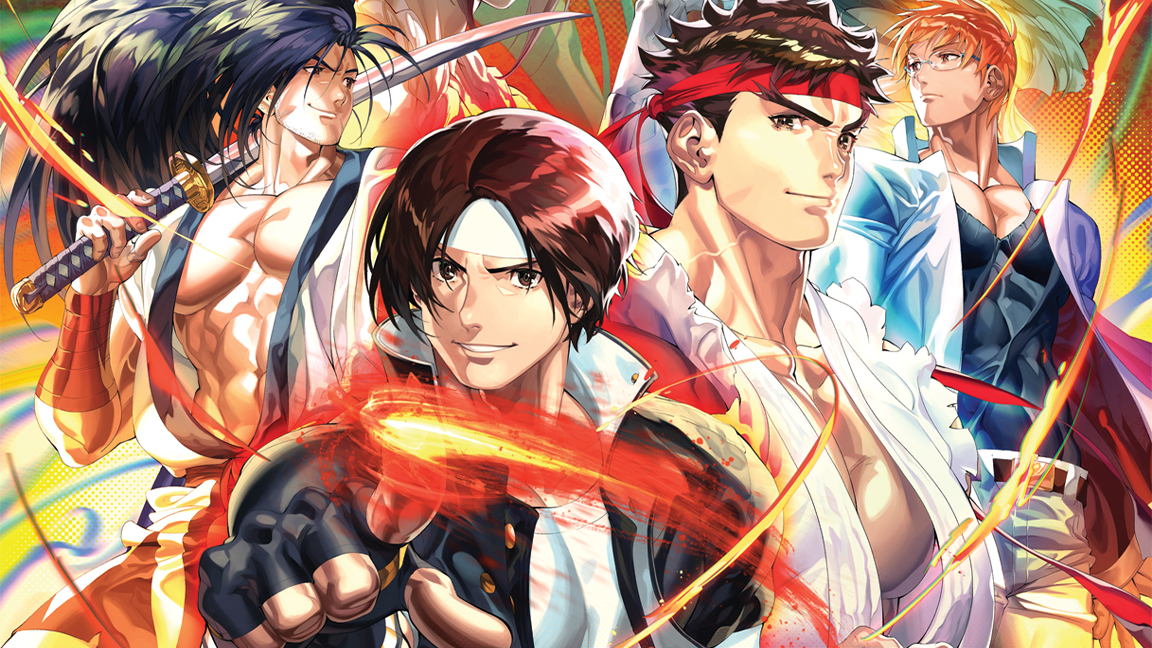
Having played the new Capcom Fighting Collection 2 for a week, and loved all these games back when they released in the '90s and Noughties, I'm reminded just how chaotic and energetic the art direction and graphic design for these classics was.
The games in the collectiion I've played on Nintendo Switch include Capcom vs SNK 2, Project Justice, Street Fighter Alpha 3, Capcom vs SNK, Power Stone 2 and Plasma Sword. They originally released on Dreamcast and found a home on PlayStation and PlayStation 2 (as well as PSP) between 1998 and 2004.
These games represent a moment when Capcom cracked its artistic knuckles and exploded; playing them again now, remastered, is a reminder just how creative Capcom was back then.
The graphic identity of these games is bold and brash, they perfectly echo the chaotic game design of fighters like Capcom vs SNK 2 and Street Fighter Alpha 3. This collection reiterates Capcom's dominance of a '90s and Noughties game art aesthetic that took the rules of UI, typography and graphic design chewed them up and spat them out; there's a colourful brazen swagger to games of this Capcom era, and I love it.
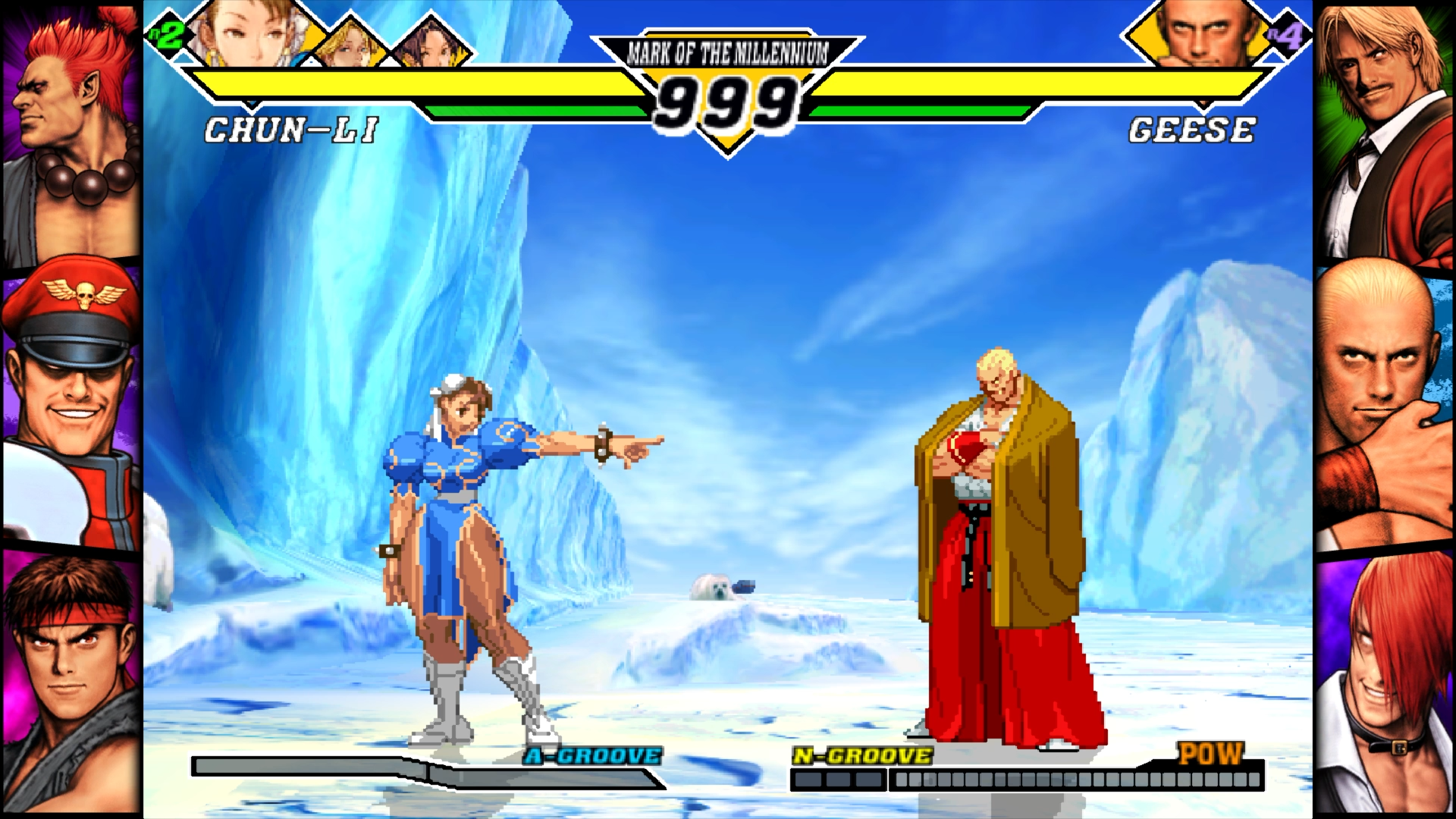
Capcom Fighting Collection 2 brings back the style
While we've seen some game's return and embrace this kind visual identity – notably the recently announced Marathon has a beautifully clean, bold 'glitch-core look – but too often these days modern games hold back where retro Capcom ate the menu.
Take Capcom vs SNK, the first game to see the two giants of the fighting genre team-up, and it's a celebration. Menu fonts literally fight for space and dominance, the game's name zaps into and out of the screen one letter at a time, the character select screen is a busy patchwork of hero art and stacked oversized portraits. It can feel unbalanced, oddly chaotic.
Street Fighter Alpha 3 is maximalism design in motion
But that's the point, Capcom vs SNK and it's follow-up Capcom vs SNK 2 are energetic and hyperactive even before a fight has started. This era of Capcom was about inciting in a punkish vibrancy to game art and design.
Other titles in the Capcom Fighting Collection 2 I've played build on then same idea, beginning with the earliest release in the collection, Plasma Sword, where the germ of the identity begins, with large chunky fonts, before culminating in Street Fighter Alpha 3's anime bombast.
Street Fighter Alpha 3 really is the game here where Capcom found its confidence. The intro is a blast of colour blocks, chunky fonts and swift animation, no graphic overstays its welcome, appearing and disappearing in a second. Street Fighter Alpha 3 is maximalism design in motion. The game's menus are a mix of elaborate patterns and multi-dimensional layouts clashing and literally fighting for your attention.
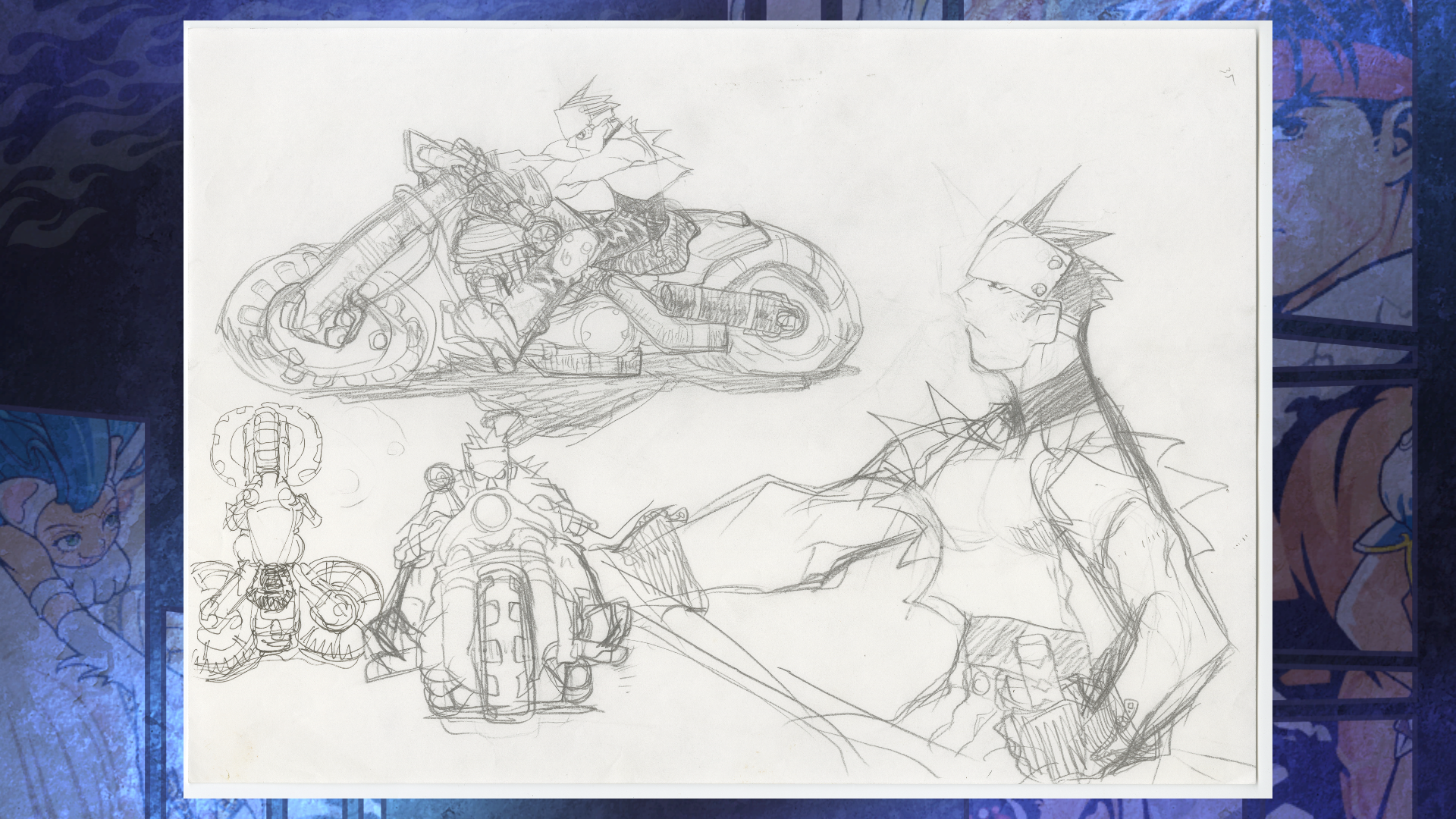
The games in this era, and included in the Capcom Fighting Collection 2, were experimenting with art, design and animation, they were loud, defiant and crammed with personality. While to an extent this is a hangover from Capcom's arcade heritage where games needed to standout, it's still little wonder then, decades later, in this remastered collection, the likes of Street Fighter Alpha 3, Capcom vs SNK 2 and the 3D fighter Project Justice feel as fresh and relevant now as they did back then.
Even Power Stone 2 experiments with style and punch. While I find it tonally withdrawn compared to the other games featured in Capcom Fighting Collection 2, with italicised fonts and smaller, finer lettering on its opening cinematic and UI, the game remains as confident in its styling as the other games.
Power Stone 2 is a chaotic four-player arena brawler that blends fighting, power-ups and item use in a last-man-standing tug-of-war to control the titular Power Stones. Its anime aesthetic, pop-art bursts of noise and, well… utter chaos is intentionally in opposition to its menu design, which take the form of interactive 3D screens. Menus are beginning to be performative.
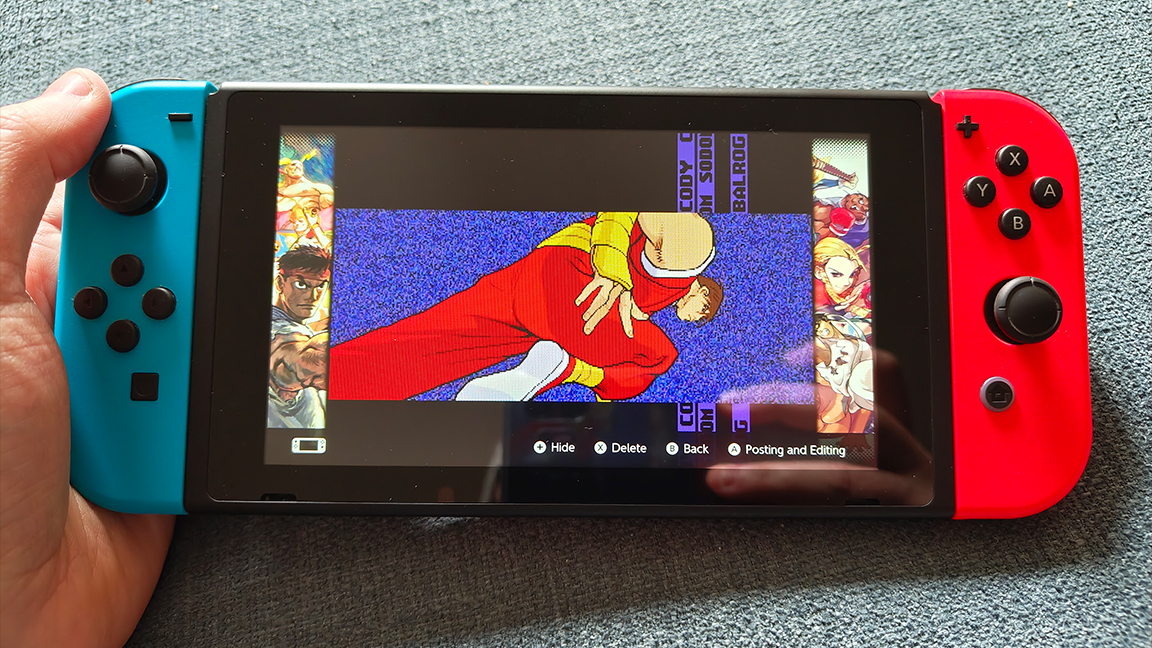
Gameplay matches game art
Non of this would matter if the games didn't play as well as the punchy 90s art style they're supporting; but after playing again for the last week I've found these games remain incredibly playable.
In the last week I've lost hours to the Capcom vs SNK duo, and forgot just how beautiful these pixel art masterpieces were, and still are. These two games in particular have incredible detail, both in the character animation and backgrounds, which were hallmarks of SNK's series in particular. (It makes the upcoming Fatal Fury: City of Wolves an exciting prospect.)
There's good depth to the fighters, with the excellent Street Fighter Alpha 3 proving a rewarding anime fighter to replay; though it's mechanics are a little less technical that the Capcom vs SNK games.
The 3D fighters, Project Justice and Plasma Sword, are perhaps the least technical games here, though Project Justice (aka Rival Schools 2) will put a smile on anyone's face – the cast of anime schoolyard brawlers remains iconic. Created by Capcom artist Edayan (Shinya Edaki), this mix of high school soccer players, goth rebels and bullying teachers remains one of a kind.
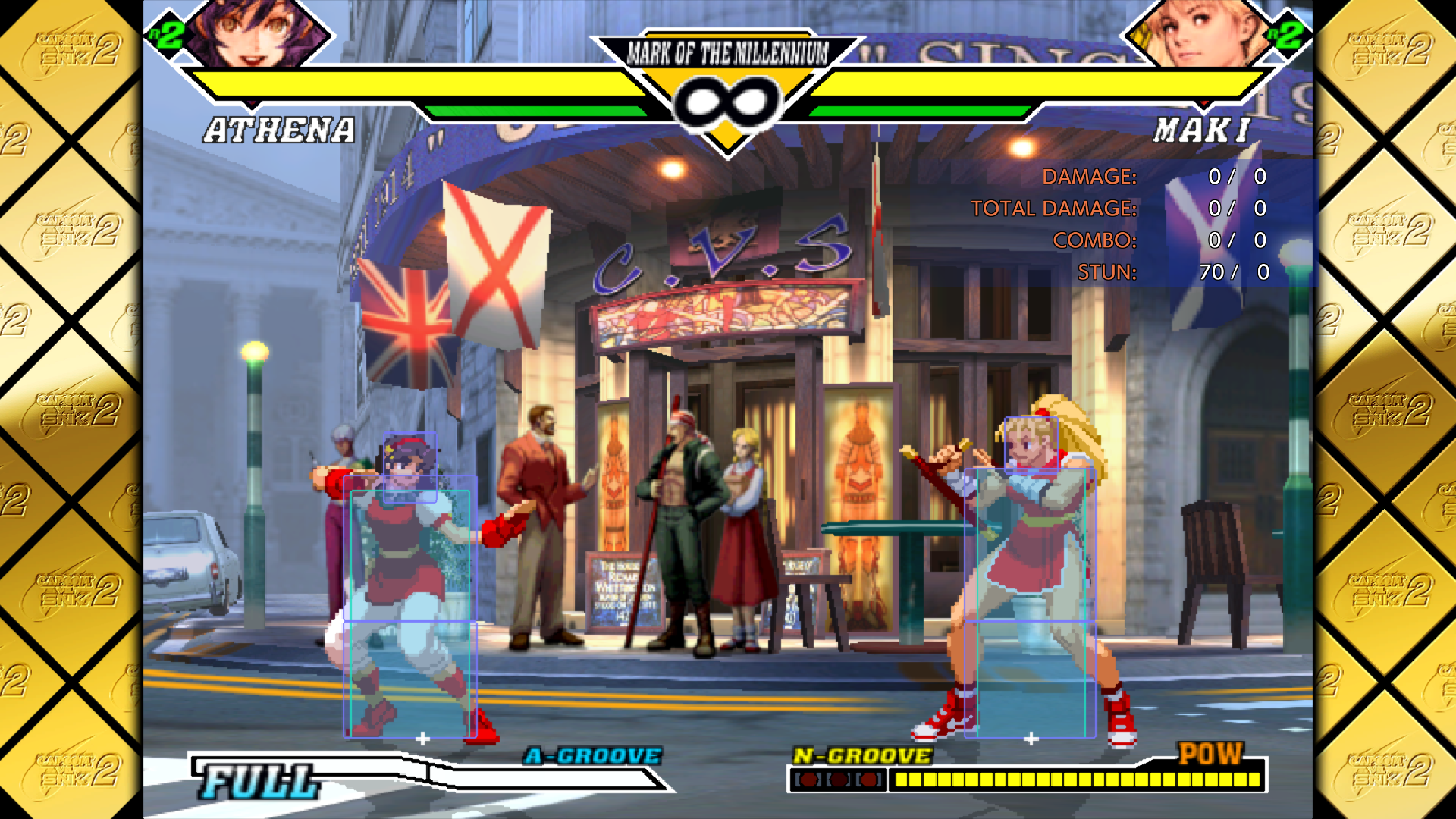
Ultimately playing the Capcom Fighting Collection 2 on Switch has reminded my game art, and in particular graphic design in games, can and should be exciting. We've perhaps had a decade of restraint where games were chasing a mature, cinematic appeal – I'm reminded of The Last of Us and its minimalist window start screen that encourages a relaxed sense of safety. Capcom's '90s and Noughties identity was anything but relaxed.
The kind of '90s and Noughties era design in the games of this upcoming collection are a reminder game art and design can be fun, weird and messy. It's too easily dismissed as a retro aesthetic when in fact this kind of approach could and should be more widely used, and in the right hands can feel perfectly modern.
The high octane visual language and styling of the late '90s and 2000s, the jagged pixels, brash typography and layered, textured slabs of colour and digital glitches should comeback, maybe this retro collection will help usher it in.
Capcom Fighting Collection 2 releases 16 May for Nintendo Switch, PS4, Xbox One and PC. Visit the Capcom website for more details.







